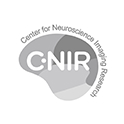People
People Search
Categories
Directory

- Hyunjin Park
- Professor
- novel data processing algorithm for neuroimaging
- Department of Electronic and Electrical Engineering
- hyunjinp

- http://hyunjinpark.blogspot.com/
- image processing, registration, segmentation, medical image analysis, neuroimaging, computer vision, data mining
- Information
Lab Name: Medical Image Processing Lab
Introdution
Our lab focuses on developing novel data processing algorithms for neuroimaging. We are particularly interested in image registration, segmentation, and feature extraction for various medical imaging modalities. Neuroimaging data contain millions of voxels and thus robust algorithmic considerations are required to properly explore such high-dimensional data. We are witnessing exponential growth in accumulated data with advances in neuroimaging technology. Thus, the role of data post-processing will be an integral part of advanced neuroimaging research. We also have following research interests; 1) data mining for neuroimaging, 2) medical image analysis for age modeling and neurological disease, 3) medical image analysis for cancer management.
Selected Recent Publications
1. B. Park and H.Park, “Connectivity differences between adult male and female patients with attention deficit hyperactivity disorder according to resting-state fMRI”, Neural Regeneration Research, 2015.
2. B. Park, J. Seo, J. Yi, and H.Park, “Structural and functional brain connectivity of people with obesity and prediction of body mass index using connectivity”, PLoS ONE 10(11): e0141376. doi:10.1371/journal.pone.0141376, 2015.
3. S.-J. Choi*, J.-H. Kim*, J. Seo, H.-S. Kim, J.-M. Lee, and H.Park, “Parametric Response Mapping of Dynamic CT for Predicting Intrahepatic Recurrence of Hepatocellular Carcinoma after Conventional Transcatheter Arterial Chemoembolization”, European Radiology 26(1): 225-234, 2016. (* equal contribution)
4. H.Park, D. Wood, H. Hussain, C. Meyer, R. Shah, T. Johnson, T. Chenevert, and M. Piert, “Introducing Parametric PET/MR Fusion Imaging of Primary Prostate Cancer”, Journal of Nuclear Medicine 53: 546-551, 2012.
5. H.Park, P. H. Bland, and C. R. Meyer, “Construction of an Abdominal Probabilistic Atlas and its application in Segmentation", IEEE Transactions on medical imaging, 22: 483-492, 2003.

- Min-Suk Kang
- Associate Professor
- Memory, Cognition control
- Department of Psychology
- kangminsuk

- http://sites.google.com/site/kanglabskku/
- Information
Lab Name: Visual Cognitive Neuroscience Lab
Introduction
Visual Cognitive Neuroscience Lab @ SKKU is a research lab investigating psychological and brain processes involved in perception, memory and cognitive control by measuring eye movements and EEGs with solid psychophysics. Currently, we study dynamics of perceptual bistability, contextual memory retrieval, and motor inhibition.
Selected Recent Publications
1. Kang, M.-S., & Choi, J, "Retrieval-induced inhibition in short-term memory", Psychological Science, 26(7): 1014-1025, 2015.
2. Kang, M.-S., Hong, S. W., Blake, R., & Woodman, G.F, "Visual working memory contaminates perception", Psychonomic Bulletin & Review 18: 860-869, 2011.
3. Kang, M.-S., Blake, R., & Woodman, G.F, "Semantic analysis does not occur in the absence of awareness induced by interocular suppression", Journal of Neuroscience 31: 13535-13545, 2011.
4. Kang, M.-S., & Blake, R, "What causes alternations in dominance during binocular rivalry?"
, Attention, Perception & Psychophysics 72(1): 179-186, 2010.5. Kang, M.-S., "Size matters: A study of the binocular rivalry dynamics", Journal of Vision 9(1): 17, 1-17, 2009.

- Junghee Lee
- Professor
- Medical Imaging, Magnetic Resonance Imaging, Molecular Imaging
- School of Medicine
- hijunghee

- Information

- Won Mok Shim
- Associate Professor
- Cognitive Neuroscience, Perception, Cognition, Human fMRI
- Department of Biomedical Engineering
- wonmokshim

- http://wshimlab.com/
- Information
Perceptual and Cognitive Neuroscience Lab (Shim Lab)
Introduction
The goal of our research is to understand how the human brain gives rise to perception and cognition, and specifically how top-down or feedback processing contributes to this process. Research focuses on how top-down processing serves to gate the entry of information into attention and memory, alter fundamental information about object location and identity, create new representations at early stages of processing where no feedforward information exists, and integrate information from multiple sensory modalities. In order to gain a comprehensive understanding of the cognitive and neural mechanisms that underlie human mental processes, including perception, attention, and memory we combine techniques from neuroimaging (encoding and decoding), vision sciences, and cognitive psychology. This allows us to explore how the brain represents and processes a range of perceptual and cognitive information.Selected Recent Publication
1. Yu, Q., & Shim, W. M. (2016). Modulating foveal representation can influence visual discrimination in the periphery. Journal of Vision, 16(3):15, 1-12.
2. Chong, E., Familiar, A., & Shim, W. M. (2015). Reconstructing representation of dynamic visual objects in early visual cortex. PNAS, 113, 1453-1458.
3. Uddenberg, S., & Shim, W. M. (2015). Seeing the world through target-tinted glasses: Positive mood broadens perceptual tuning. Emotion, 15, 319-328.
4. Shim, W. M., Jiang, Y. V., & Kanwisher, N. (2013). Redundancy gains in retinotopic cortex. Journal of Neurophysiology, 110, 2227-2235.
5. Shim, W. M., Alvarez, G. A., Vickery, T. J., & Jiang, Y. V. (2010). The number of attentional foci and their precision are dissociated in the posterior parietal cortex. Cerebral Cortex, 20, 1342-1349.

